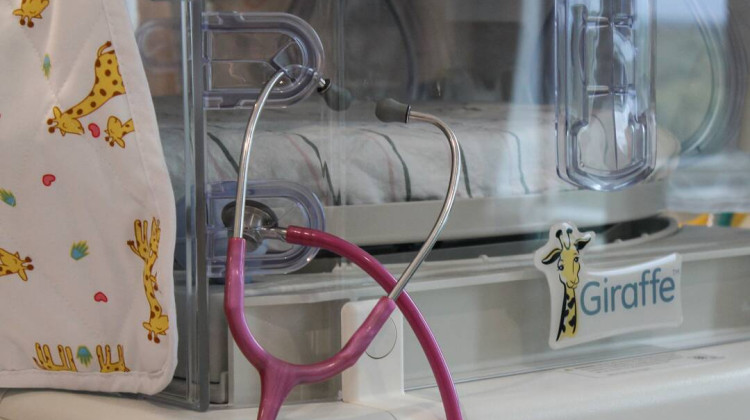
Temperatures in Indianapolis can vary by as much as nine degrees Fahrenheit.
(Graphic courtesy of Climate Central)New data continue to show that temperatures in Indianapolis can vary by more than nine degrees Fahrenheit, depending on where you live in the city.
Experts say those differences in heat are likely to grow as climate change makes the world warmer.
Data from the independent research and reporting collaboration Climate Central underscore existing research into how heat impacts some parts of Indianapolis more than others.
Experts say the built environment -- large roofs, parking lots, and lack of greenery -- all contribute to making cities hotter.
Vivek Shandas is a professor of climate adaptation at Portland State University. He said as the world gets warmer, cities will heat up even faster compared with rural areas.
“What is a nine-degree difference today will likely be a 12-degree, 15-degree, 20-degree difference in the decades to come,” he said.
Shandas said the data shows cities need to take steps to reduce the impacts of higher temperatures.
“We have a disproportionate burden of heat in some parts of the city compared with other parts of the city,” he said. “One of the things I would really encourage local communities to do is – how we can develop systemic approaches to reducing the burden of heat in the red areas.”
Gabriel Filippelli is the executive director of the Environmental Resilience Institute at Indiana University. He said Indiana will see far more 90-plus degree days as the planet warms.
“Depending on the climate scenario you choose, we’ll have something like a full month of 90-plus degree weather by the end of the century,” he said. “That’s a substantial change from about four days in the past.”
Filippelli said city planners should ensure that resources – and efforts to reduce urban heat — are dedicated towards higher heat areas where people live. He said there aren’t always incentives for developments that address heat.
“If you are a city, and Walmart says we want to move in, and here’s the increased tax revenue… if that’s one proposal versus another proposal saying we want to make this area cooler, let it be a sacrificial wetland or forest for zero tax dollars, many cities would choose the former,” he said.
Filippelli said there are also a number of health factors that cities often overlook when they make these kinds of decisions, such as heat-related illnesses and degraded mental health – as well as the loss of work that can stem from those issues.
Indianapolis city officials are already working on projects to help fight the disproportionate impacts of urban heat.
In 2019, the city launched a sustainability plan which identified, in general, that many of the city’s most socially vulnerable neighborhoods were ones that also saw higher maximum daily temperatures and less tree cover.
Mo McReynolds is a senior project manager with the Indianapolis Office of Sustainability. She said the city has worked with partners to plant over 30,000 trees since 2019 in an effort to reduce the so-called urban heat island effect.
“There are so many positive effects of urban canopy existing – especially around residential areas,” she said.
According to the National Weather Service, more people die from heat than any other weather-related hazard.
Contact WBAA/WFYI reporter Benjamin Thorp at bthorp@wfyi.org.
 DONATE
DONATE







 Support WFYI. We can't do it without you.
Support WFYI. We can't do it without you.